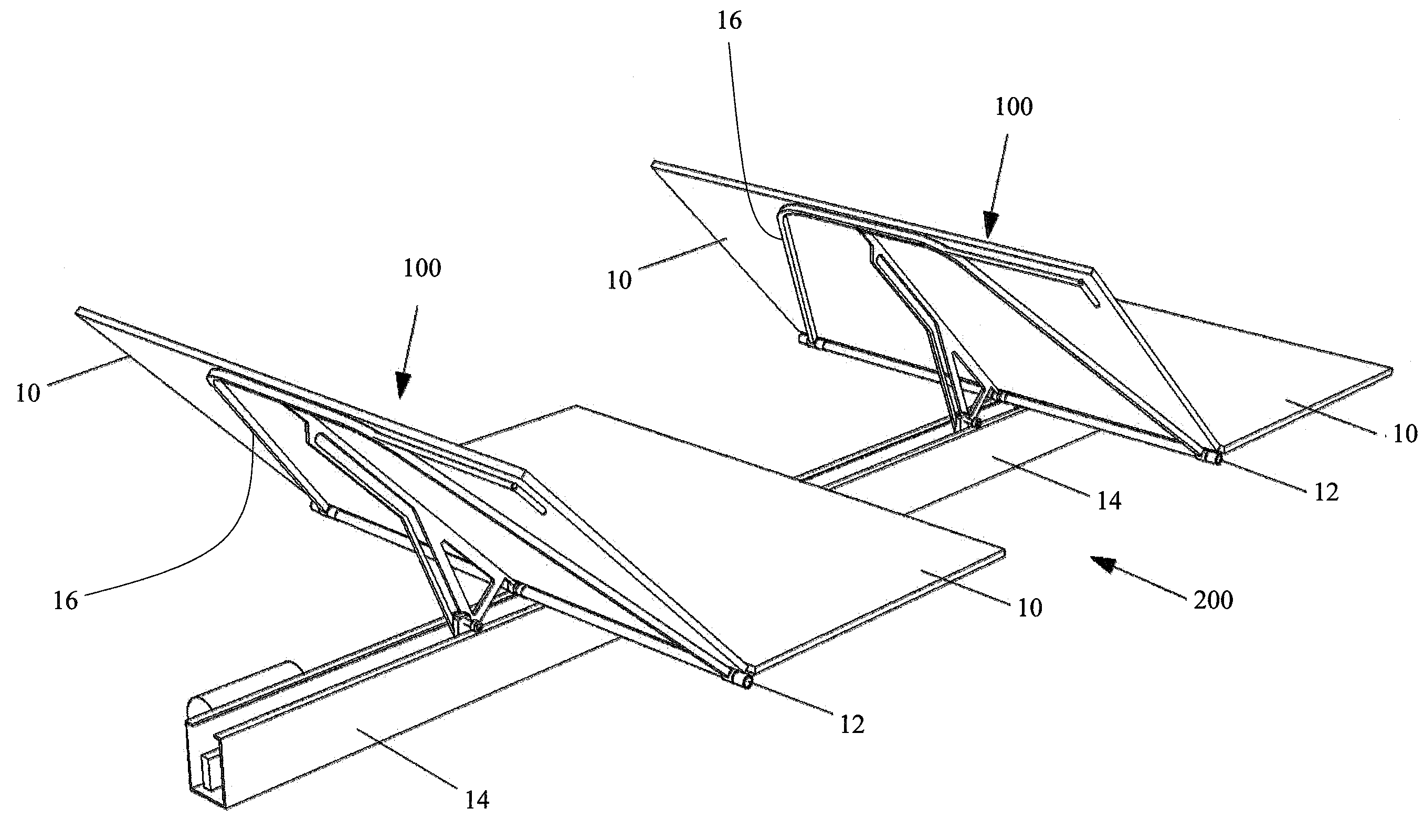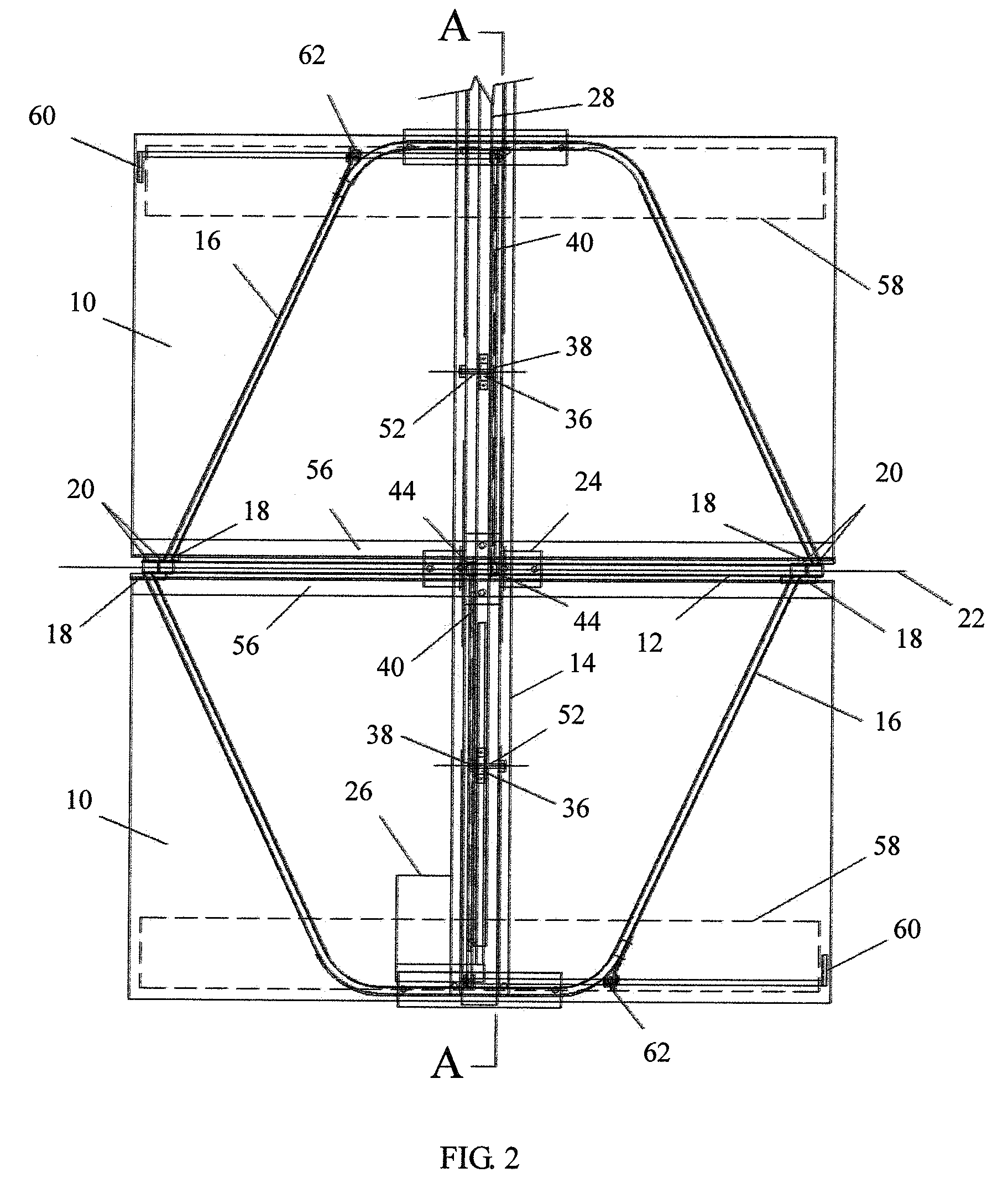Low profile solar tracking systems & methods
a solar tracking system and low-profile technology, applied in the field of solar energy collection, can solve the problems of reducing the overall efficiency of the system, affecting the daily and/or seasonal positions of the solar array, and the maintenance of any one panel in the array can be problematic, so as to efficiently track the daily and/or seasonal positions, and efficiently collect solar power
- Summary
- Abstract
- Description
- Claims
- Application Information
AI Technical Summary
Benefits of technology
Problems solved by technology
Method used
Image
Examples
Embodiment Construction
[0039]Referring now more particularly to the drawings, FIG. 1 shows a perspective view of a tracking assembly 200, which is comprised of one or more tracking units 100. In this particular figure, only two tracking units are shown for clarity. In this embodiment, each tracking unit 100 has two solar panels 10 and provides a hinge shaft 12 shared between two substantially identical and adjacent solar panels 10. In a tracking assembly 200, the tracking units 100 share a common structural channel frame 14.
[0040]FIG. 2 shows a plan view of the method of attachment of solar panels 10 to the tracking unit. The underside of each solar panel 10 rests on a respective panel frame 16 and is secured using panel clips 18. Each end of each panel frame 16 is connected to a hinge collar 20, which rotates about the fixed hinge shaft 12. The centerline of the hinge shaft 12 defines the hinge daily axis 22, and is the axis of rotation for the solar panel 10. Frame mounting bracket 24 is used to secure ...
PUM
 Login to View More
Login to View More Abstract
Description
Claims
Application Information
 Login to View More
Login to View More - R&D
- Intellectual Property
- Life Sciences
- Materials
- Tech Scout
- Unparalleled Data Quality
- Higher Quality Content
- 60% Fewer Hallucinations
Browse by: Latest US Patents, China's latest patents, Technical Efficacy Thesaurus, Application Domain, Technology Topic, Popular Technical Reports.
© 2025 PatSnap. All rights reserved.Legal|Privacy policy|Modern Slavery Act Transparency Statement|Sitemap|About US| Contact US: help@patsnap.com



